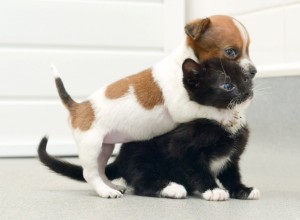Writing a creative brief should never be a solo practice. It must be a collaborative process. This is not the same as creative-brief-by-committee, but it should be a team-assembled creation.
I confess that when I was a practicing copywriter, even a young creative director, I rarely worked with the account management or account planning teams to chisel out a draft of a creative brief. Only later, after I’d written an early draft of my book, did I offer to work with those lonely souls who wrote briefs.
If I were starting my career today, knowing what I know about the challenges of writing a great creative brief, I would do things differently.
That’s why I have compiled this list of what advertising creatives can contribute to the process of writing an inspired creative brief.
Whether you—copywriter, art director, graphic designer, creative director, web content manager….the list is long—are a novice or the senior player, you have something at stake in the outcome of the creative brief.
1. Step up. Don’t wait to be asked.
If you are a senior-level creative (creative director or higher), you probably already collaborate with your account brethren on the brief. If you don’t, shame on you. Start today. 
If you are anywhere else on the ladder of experience/responsibility, from novice to mid-career and you do not work with your account team on the brief, start now. This is not only a great team-building exercise, it is a career-enhancing practice.
Take ownership with your account person of the brief-writing process together. Volunteer to help, even if it starts out as just proofreading the first draft. I guarantee that any offer to help will be accepted with enthusiasm. The more sincere the offer, the more likely you are to learn and play an influencing role.
You, the ad creative, already know the value of working with a partner (your art director or copywriter) to produce better work. The principle holds true with the writing of a creative brief. You might just use this idea if your account team member resists.
Art directors, don’t shy away because you’re not a writer. If you’re a good thinker and conceptor, you have honed your BS detectors and can see faulty thinking when you read it. My best art director partners over the years played this role with me. They admitted that they couldn’t write a headline, but they knew a bogus idea when they saw it.
2. Ask questions first.
I have little doubt that an account person whose responsibility includes writing creative briefs will turn down your offer to help. But there might be some skepticism, especially if there is any tension between the account and creative departments. You’ll know whether this is true or not in your agency or place of employment.
If there is some tension, start your collaboration from a place of honest inquiry. Ask questions about how your account co-worker approaches the creative brief. Use the Socratic approach: each question can be followed by another question as you figure out the process.
I suggest this as a way to gauge the reaction of your co-worker and especially as a preventive measure. The last thing you want to do is make pronouncements and sweeping statements, or worse, accusations about weak past creative briefs.
Your job here is to turn your expressed interest in collaborating into a workable and successful team effort to produce killer creative briefs. Rome, as they say, was not built in a day. Take it slow and easy.
3. Brief the creative team with your account co-worker/brief-writing partner
Trod new ground. Typically, it is the account team that briefs the creatives. Why not break the mold and brief together? You worked on the process with your partner. Ergo, you have insights from the experience of sculpting the finished draft.
Not only does this adaptation of the briefing process communicate a common stake-holding position, it demonstrates to both teams—account and creative alike—that the partnership is serious and sustainable.
One of the best pieces of advice I ever received on how to shake up my thinking when I get into a creative corner was to stop and turn everything around 180 degrees. Look at your challenge from a completely fresh perspective.
Briefing the creative team as a creative representative of the creative-brief writing team will make everyone see the process differently.
4. Reciprocate
Invite your new creative-brief collaborating account co-worker into your creative space and show her early drafts of your ideas. Talk about how your thinking, based on this brief you worked on together, sparked the ideas you’re experimenting with. Ask for feedback. Talk. Question. Listen.
Most importantly, collaborate. Or rather, continue the collaboration you started when you were writing the creative brief.
The idea here is not so much to blur the lines between account and creative. That’s not truly going to happen. It’s to synchronize the thinking process between the key players.
If you literally start on the same page on the same day of a new task—writing a creative brief together—you are far less likely, it seems to me, to get off track later on.



